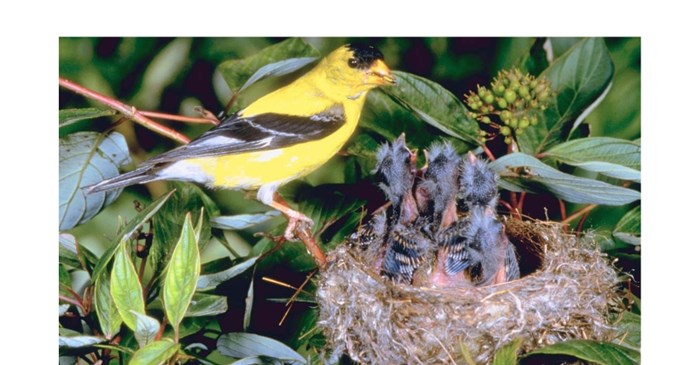By the time we reach the summer solstice, nesting season is in the rearview mirror for many songbird species, as their spring chicks have already grown and left the nest.
For other species though, summer is a time when nesting is in full swing, going as late as July or even August. Let’s take a look at a few examples of summer nesting.
American Goldfinch
Compared to other North American birds, the American Goldfinch gets a late start, beginning its nesting in July and August. By that time of year, milkweed and thistle have started producing their silky fibers, fibers that this bird will use to help build their cup-shaped nests which can be found in trees and shrubs.
American Goldfinch are one of a few species that are almost exclusively vegetarian, eating only the occasional insect. You can keep these frequent feeder visitors coming back with Lyric Finch Small Songbird Mix, which features five of their favorite seeds including sunflower and Nyjer.
Indigo and Lazuli Buntings
Other birds start the nesting process a little later because they’re long-distance migrants. The Indigo Bunting makes its 1,000-mile journey from its winter range, which extends from south Florida to northern South America, to its breeding territory, which spans a wide area between the foot of the Rocky Mountains and the Atlantic Coast. By the time this long distance migrant’s brood leaves the nest, it could be late in July. West of the Rockies, the same holds true for Lazuli Buntings, who use spider web or caterpillar silk as a wrap to strengthen their nests.
Buntings flock to feeders featuring small seeds. Attract these late nesters, as well as a multitude of other bird species by filling your feeder with Lyric Sunflower Kernels, a no waste, 100% edible bird seed.
Multi-brood Bird Species
Another reason birds nest late in July is because they produce two or more broods per breeding season. When you’re talking about common feeder birds, Mourning Doves make the list. A mated pair of these birds can produce as many as six broods a year. They’ll start the nesting process as early as late March, and wrap it up as late as early September. The American Robin as well as the Northern Cardinal are also some of these multi brood bird species.
Mourning Doves will sit on platform feeders for a bite, but setting up a ground feeder is the best way to attract these gentle birds that fill the summer air with their soothing coos. Lyric Wild Bird Mix is a great seed mix for attracting ground feeding birds like the Mourning Dove, among a multitude of other species.
Want to support your neighborhood songbirds? Start by becoming a citizen scientist. Sign up at NestWatch.org and start reporting any nesting activity you see. Then, keep your feeders filled with high quality seed.
